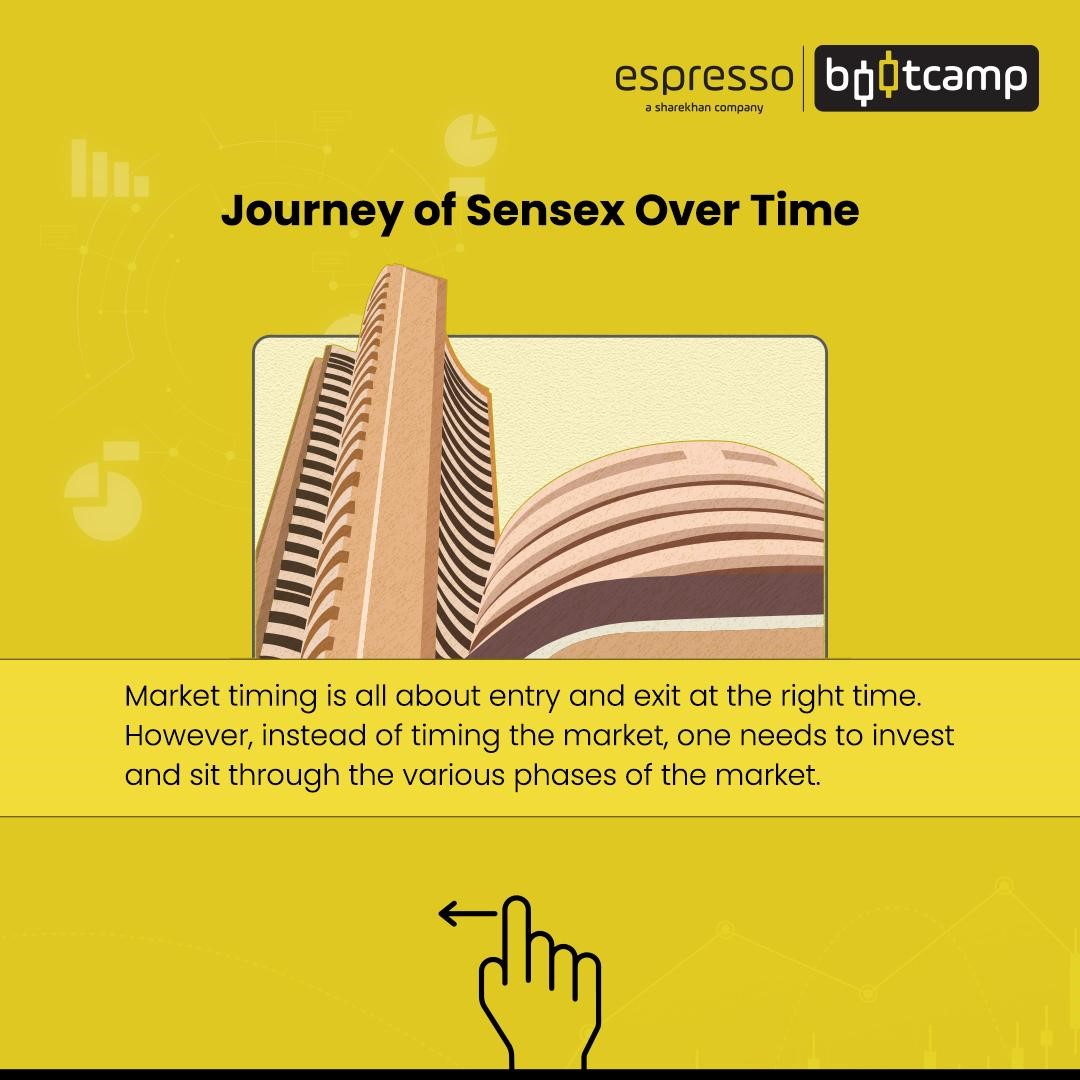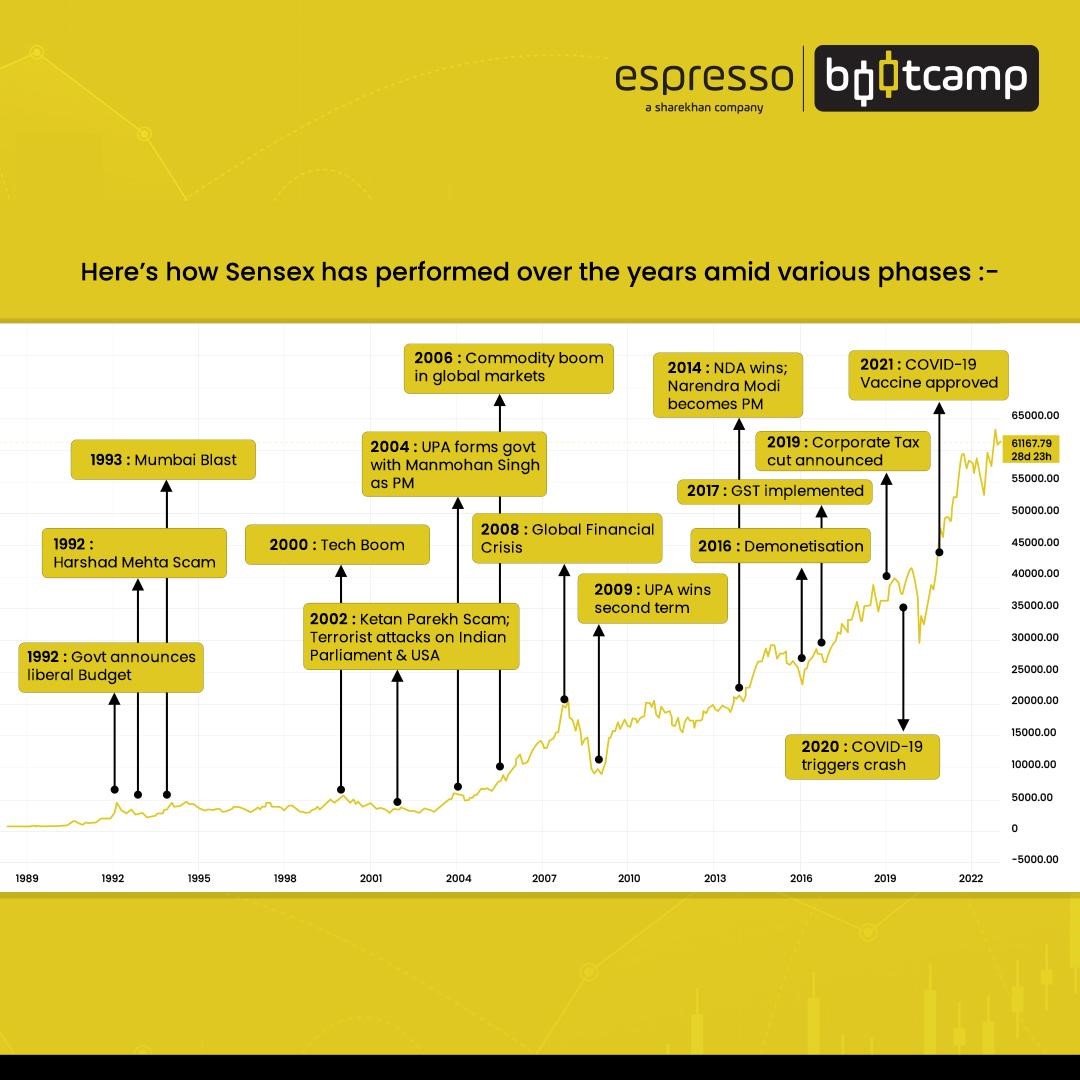What does timing the market mean? In layman's language, it is buying the market when it is at the bottom and selling the market when it tops. Sounds pretty easy. However, it needs a special skill set and dollops of luck for a successful trade.
Skill and luck go hand in hand, and deficiency in either of the two will lead to losses. Markets move in cycles that consist of wild swings of bullish peaks and bearish bottoms. It is almost impossible, even for an experienced trader or investor, to buy when the markets are low and sell when the markets are at a high. Also, a market cycle can have multiple cycles within it and one can hardly predict the right bottoms or tops.


Timing is not anybody's cup of coffee
Market timing is about entering and exiting at the right time and, therefore, is not anybody's cup of coffee. Timing involves predicting future price movements to enter and exit to beat the market strategically. In this game, as the market moves higher, the investor looks to exit when he perceives a pullback based on his experience and study to avoid a downtrend. Similarly, he also seeks to enter again when he perceives that the market has pulled back enough to ride the uptrend. However, markets can spring up surprises at any point in time and go completely against the investor’s judgement. This risk is inherent in timing strategies.
Also, the cost of being wrong can be quite huge too. For example, an investor who believes that the uptrend has come to an end exits and waits for a downtrend to happen. However, the market gives a very short pullback and continues its upward journey and moves into an extreme bullish phase, leaving the investor sitting on cash or investment in a low-yielding asset. The cost of timing the market is very high as it involves multiple entries and exits. Apart from this, too much time is spent on monitoring the markets to identify entries and exits.
The tools used for timing the market for forecasting future price movements include technical analysis, market data analysis, fundamental analysis and a combination of these.
Time in the market suits all
Not many can be successful in timing the market. It does need a special skillset, if not a crystal ball. Most exponents of timing the markets are of the view that successful forecasting of the trends can yield unbeatable profits. However, this is practically impossible for a large number of traders and investors. Also, this method is not useful for new entrants in the market. Therefore, it is highly recommended that one should spend time in the market rather than time the market.
Time in the market is the opposite of timing the market. Instead of frequent buying and selling at bearish and bullish bottoms and peaks, time in the market involves sitting through the various phases of the market. It does not involve short-term predictions and believes in the fundamentals to play through the market cycles. If the fundamentals are strong enough, the market survives the bearish phases. It means staying invested for a length of time. As Warren Buffet puts it "Our stay-put behaviour reflects our view that the stock market serves as a relocation center at which money is moved from the active to the patient."
The idea of time in the market is to create wealth, whereas profiting is the idea in timing the market. However, buying and holding do not mean buying and forgetting. One still needs to monitor and regularly evaluate your investment portfolio. Time in the market is important for achieving your financial goals.
Case for a time in the market
Research conducted by the Schwab Centre for Financial Research shows that timing the market perfectly is nearly impossible. It was suggested in the research that it was better not to time the market and instead make a plan and invest as soon as possible.
This research involved five hypothetical long-term investors:
- The perfect market timer-who waited and timed his annual investment
- A lumpsum consistent investor- who deployed on the first trading day of the year
- A systematic investor- who deployed the money annually at the beginning of the month
- A poor timer-who more often than not invested when the market topped and lastly
- A procrastinator- an investor waiting for the best time to enter the market and ends up investing in treasury bills.
All of the above were allocated $2000 annually to be invested in the stock market for the next 20 years.
The research concluded with the perfect market timer emerging as the winner, and he accumulated $151,391 over 20 years. The consistent lumpsum investor came in second with $135,471. This was a surprise as there was no effort to time the market and it was deployed consistently. The systematic investor came in third place with $134,856 as the dollar-cost averaging worked for him. The difference between the second and the third was only $615. The poor timer came in the fourth position with $121,171, much better than the fifth person who never invested in equities waiting for the right time and ended up with $44,438. The above research concludes that even a bad timer ends up growing his wealth in the stock market if he spends more time in the market than a procrastinator who postpones his buying forever.
The most important takeaway from this research is to have an actionable plan. If one is unable to decide the time to invest a lumpsum amount, it is better to opt for the systematic dollar-cost averaging method as there is not much difference in the returns. But one has to be decisive in his approach.
Points to remember
- Investing and sitting through various market phases typically proves better than trying to time the market.
- The cost of timing the market can be high due to multiple entries/exits and also the lost opportunities.
- Ultimately, a disciplined investment process wins in the long term.
 0
|
0
|
 0
0
 Modules
Modules

 Watch
Watch 
